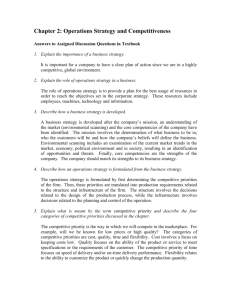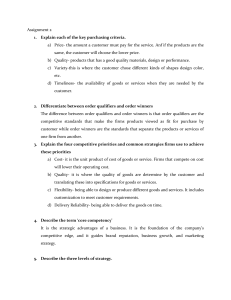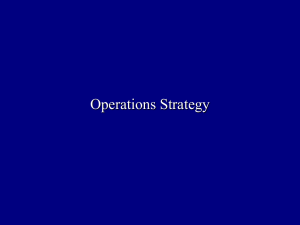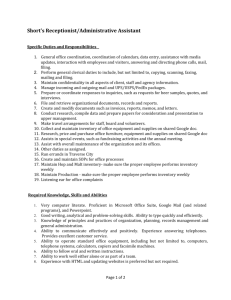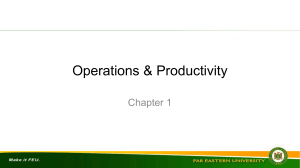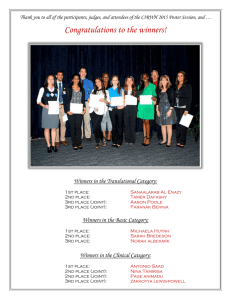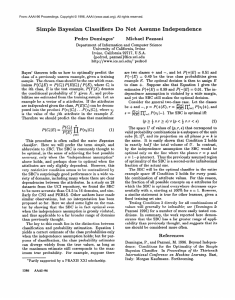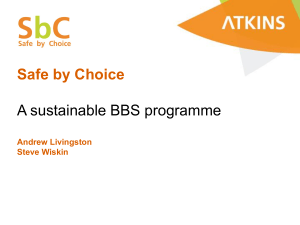Solution
advertisement
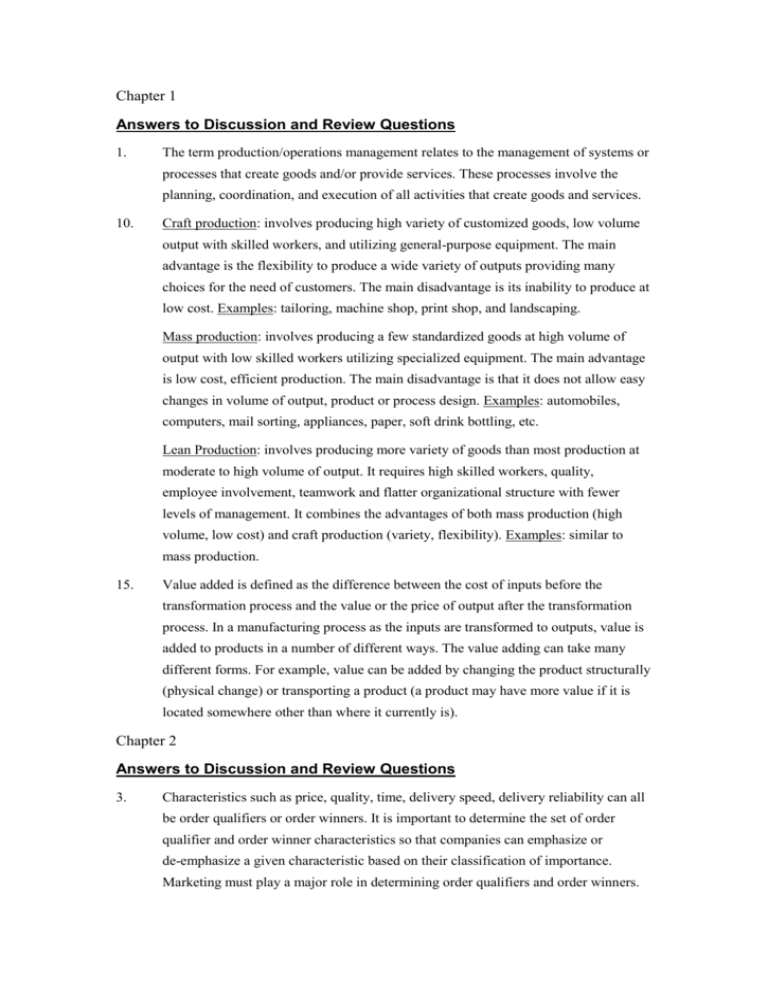
Chapter 1 Answers to Discussion and Review Questions 1. The term production/operations management relates to the management of systems or processes that create goods and/or provide services. These processes involve the planning, coordination, and execution of all activities that create goods and services. 10. Craft production: involves producing high variety of customized goods, low volume output with skilled workers, and utilizing general-purpose equipment. The main advantage is the flexibility to produce a wide variety of outputs providing many choices for the need of customers. The main disadvantage is its inability to produce at low cost. Examples: tailoring, machine shop, print shop, and landscaping. Mass production: involves producing a few standardized goods at high volume of output with low skilled workers utilizing specialized equipment. The main advantage is low cost, efficient production. The main disadvantage is that it does not allow easy changes in volume of output, product or process design. Examples: automobiles, computers, mail sorting, appliances, paper, soft drink bottling, etc. Lean Production: involves producing more variety of goods than most production at moderate to high volume of output. It requires high skilled workers, quality, employee involvement, teamwork and flatter organizational structure with fewer levels of management. It combines the advantages of both mass production (high volume, low cost) and craft production (variety, flexibility). Examples: similar to mass production. 15. Value added is defined as the difference between the cost of inputs before the transformation process and the value or the price of output after the transformation process. In a manufacturing process as the inputs are transformed to outputs, value is added to products in a number of different ways. The value adding can take many different forms. For example, value can be added by changing the product structurally (physical change) or transporting a product (a product may have more value if it is located somewhere other than where it currently is). Chapter 2 Answers to Discussion and Review Questions 3. Characteristics such as price, quality, time, delivery speed, delivery reliability can all be order qualifiers or order winners. It is important to determine the set of order qualifier and order winner characteristics so that companies can emphasize or de-emphasize a given characteristic based on their classification of importance. Marketing must play a major role in determining order qualifiers and order winners. In classifying order winners and order qualifiers, marketing and operations must work together to match the market needs with the operational capability of the firm. 8. Time-based strategies are approaches that focus on reducing the time needed to conduct the various activities in a process. The rationale is that by reducing time, costs are generally less, productivity is higher, quality tends to be higher, product innovations appear on the market earlier, and customer service is improved. Solutions 1. 300 SBC 37 .5 SBC/W last week 8W 240 SBC 40 SBC/W this week 6W Higher productivity during the previous week. 3. (1) (2) (3) (4) (5) (6) (7) Units $ Pounds Cost Total MFP Week Output Sales Material Material Cost (3) (6) 1 300 $42,000 45 $270 $7,470 5.62 2 338 47,320 46 276 8,676 5.45 3 322 45,080 46 276 8,676 5.20 4 354 49,560 48 288 9,888 5.01 Multifactor productivity dropped steadily from a high of 5.62 to about 5.00. 4. a. Before: 80 5 = 16 carts per worker per hour. After: 84 4 = 21 carts per worker per hour. b. Before: $10 x 5 = $50 + $40 = $90; hence 80 + $90 = .89 carts/$1. After: $10 x 4 = $40 + $50 = $90; hence 84 + $90 = .93 carts/$1. c. Labor productivity increased by 31% (5/16). Multifactor productivity increased by 4.5% (.04/.89).
